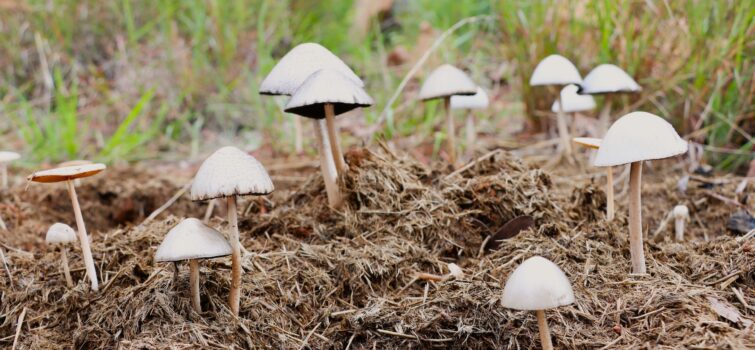A wild menu of survival
You are what you eat, or so they say. Can you imagine this was true, I would think many of us would cringe to think what we would look like, how we would think or what would inspire us, based on what we had for breakfast. Most of us, I dare say, would be horrified at the result and may never eat again. However, what we eat, does influence what we are and therefore we should take care of what we consume.
We have the luxury nowadays of eating anything we want, limited not by choice or availability for the most part, but by preference, budget, fancy, or by falling victim to spot on marketing campaigns. Finding food quite simply involves a trip to the kitchen, opening a cupboard or the refrigerator and at a glance putting a menu together. The meal matches the time of day, our activity, pre and post this looming consumption episode, our mood plays a role, a ‘craving’ or is it an excuse, none the less, before we assemble our meal, this data is analysed in a millisecond. Foraging is a gentle stroll around the kitchen, and certainly requires no dirty work, perhaps a few dishes later, but nothing strenuous goes into feeding ourselves. Food has long lost its value as a necessity and the luxury of food has grown more important than the necessity of nourishment.
I am often asked by Guests; “where would the best place be to survive out here and what we would do to survive if we had to live freely on the Reserve”? The answer is easy. I would wonder up the road back to the place a cold beer, warm bed and meal cooked by our Chef would be waiting. Simple. If only, but this does warrant the questions of “what would we eat” or, “how would we survive” if we had to be independently roaming around the Reserve.
One automatically thinks of foraging for food as rummaging in the undergrowth looking for grubs and edible mushrooms or flowers to add to the dinner table. It appears as a hobby and something to occupy the weekend. It provides a reason to get into nature and connect with a primal calling perhaps. It even excuses us having a bit of grime under the nails. Some may think it is the combination of hiking and gardening, with a bit of nourishment on the side. There is even an ‘idiots guide to foraging’. Well, these are the times we live in where foraging hardly ever comes up as a survival tactic.
Foraging for food is a modern term, where hunter-gathering has been around for almost two million years. Up until eleven thousand years ago, humans were solely hunter-gatherers, hunting for wild animals and foraging or gathering food. The Hadza people, a small community in Tanzania still practice this culture of hunter-gathering, living off the land as their ancestors did before, forgoing the temptation to be pastoralists and farmers. Before hunter-gathering, early groups of bipedal man practiced scavenging for food from the remains of kills from large predators. For hunter-gathers, the need to survive was driven by the need to keep moving and so mobility became the survival strategy. Moving between areas offering different resources, and moving between areas through the seasons, gives access to greater opportunities for survival.
The early hunter-gatherers in southern Africa, the San, are believed to have descended from the original homo sapiens people who lived in these parts for 150 000 years. The name ‘San’ is a khoi-khoi word from ‘Saan’ which means ‘the people who gather wild food’. Much of the knowledge local groups today use for foraging for food and other resources for medicinal uses, tools, construction and more, would have been passed on through long lineages of family trees.
So here we are, out on the Reserve and we need to find food with the end goal to stay alive for let’s say twelve hours. Where do we begin?
In summer, when things are green and lush and seemingly plentiful, we watch how many animals wonder around in this buffet of food for them, passing so much by and eating very little. At face value, the bushveld looks to be in a state of oversupply, yet come winter, most of it is left uneaten. It’s a strange concept for us to understand and our judgement is ignorant. Just because its green, doesn’t mean it is worth eating. Animals forage for food, seeking out the best on offer at that time. Yes, summer provides with abundance, variety and in varying stages of suitability. Think root, to leaf, to flower, to fruit. If animals were to watch us humans in the same way we do them, they would be equally confused by our behaviour. Wandering around a grocery store, passing so many available foods by, with a near empty trolley or cart wheeled before us.
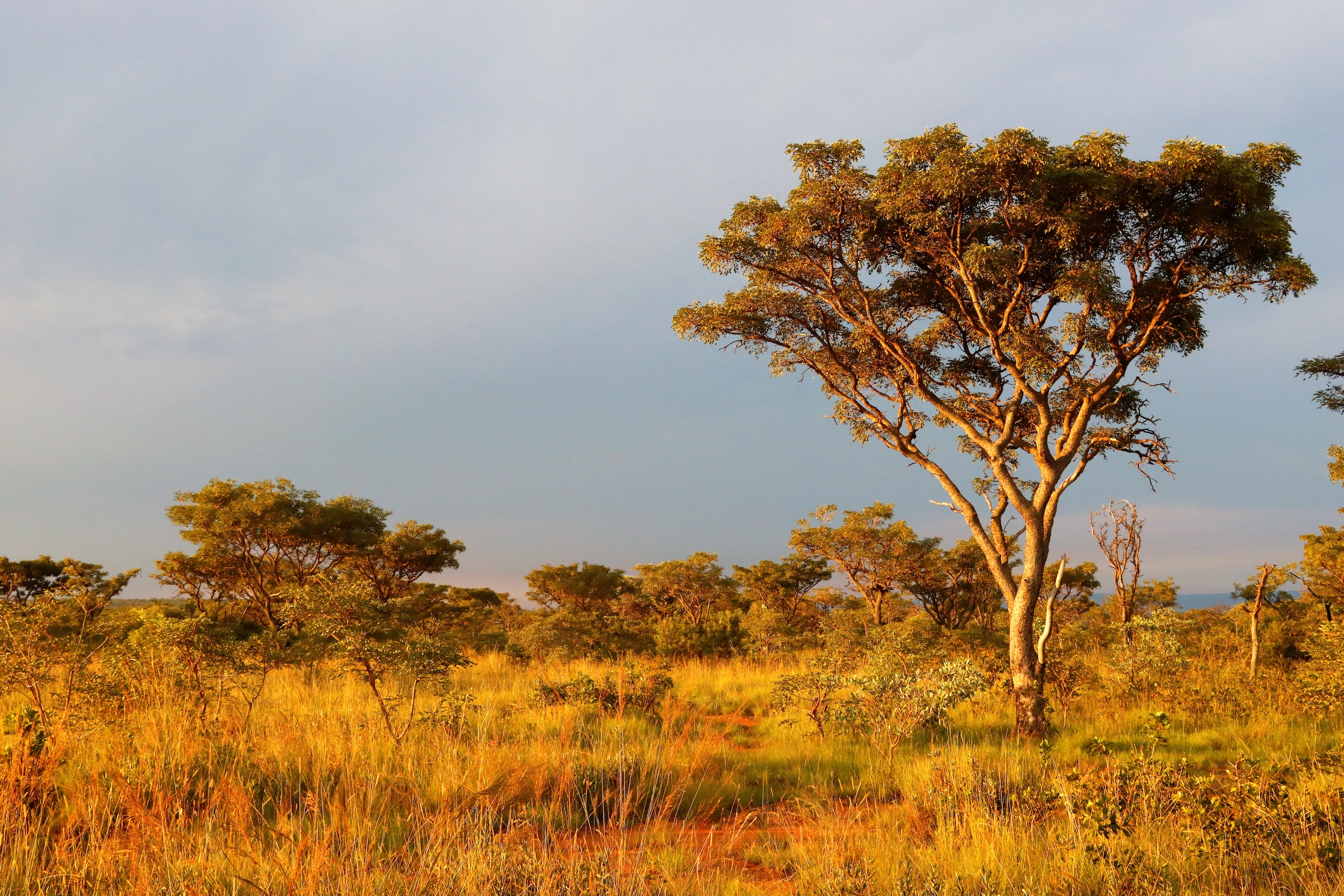
Finding food depends on the season. It depends on availability. It depends on competition and other survival tactics, like avoiding predators. It depends on nourishment needs, including water for hydration. It most of all depends on mobility. To survive, keep moving. Early hunter-gathers, as with many animals who shared the Waterberg with them, would have moved into these areas seasonally. I during the summer, when water and food was readily available, and out in the winter where fewer opportunities existed. In order for us to survive on the Reserve as posed in the question, would depend on the season. Luckily for us, right now we are at the end of summer, on the brink of winter and so finding resources to survive is a little easier. So, let’s begin.
Finding food in your surroundings requires a great deal of awareness, of feeling, and of understanding. Knowledge is critical and learning is essential. In the wild, where libraries and Google are scarce, knowledge is experience and gaining this takes time, yours and others.
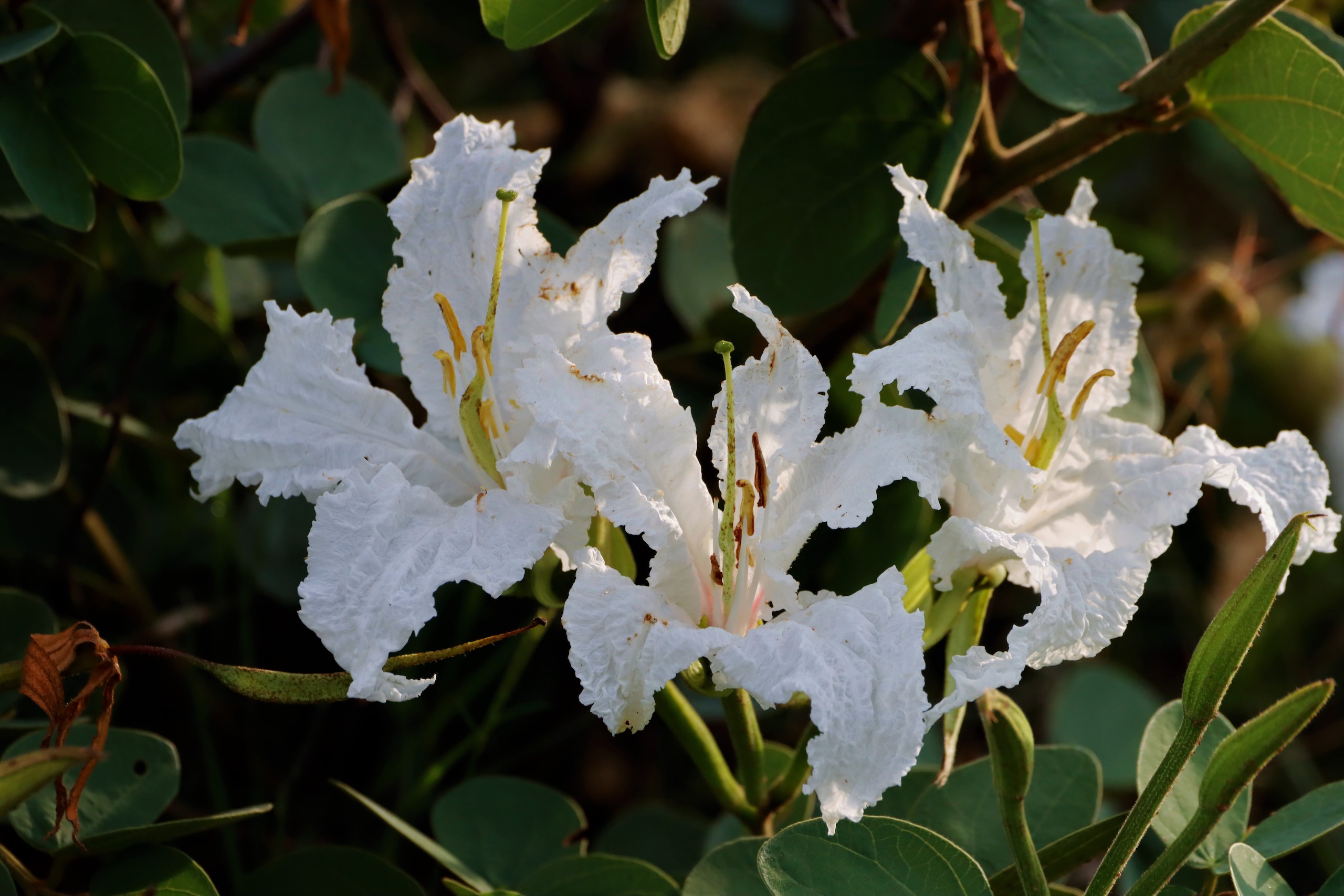
I find I always approach the day better with a cup of coffee in hand, and who wouldn’t. So, for us to start our half day forage and survival experience, we best have a coffee. Let’s say we are dropped off not far from the Camp, the goal to find food for the day and be back in Camp by nightfall. We are right here at Fig Tree plains; an iconic part of the park. On the fringes of the plains, you will find a plant from the family, Fabaceae (the bean family), the White Bauhinia or Coffee-neat’s Foot, Bauhinia petersiana. Early to mid-summer, these deciduous shrubs and trees are in bloom, eventually giving rise to a seed pod with valuable, edible seeds. We get a fire going and roast the ripened seeds. Boil a bit of water adding the roasted, crushed seeds, giving us the wild coffee kick to launch us into the day. Don’t forget to keep some of the seeds, raw for boiling later. Alternatively, the roasted seeds are eaten as a snack providing good energy. This is regarded as a delicacy. If you find the pods are green and the seeds immature, the whole green pod is roasted and the seeds then removed and eaten. With the burst of energy from the seeds, dig the roots up and whilst you still have fire, roast them. The outer, roasted sections can be eaten, discarding the core. This is often regarded as a famine food, which is seldomly eaten at other times, however for our purposes, we cannot be sure we will find food elsewhere, so take it along. Take only what you need, leave the rest and remember where to find them.
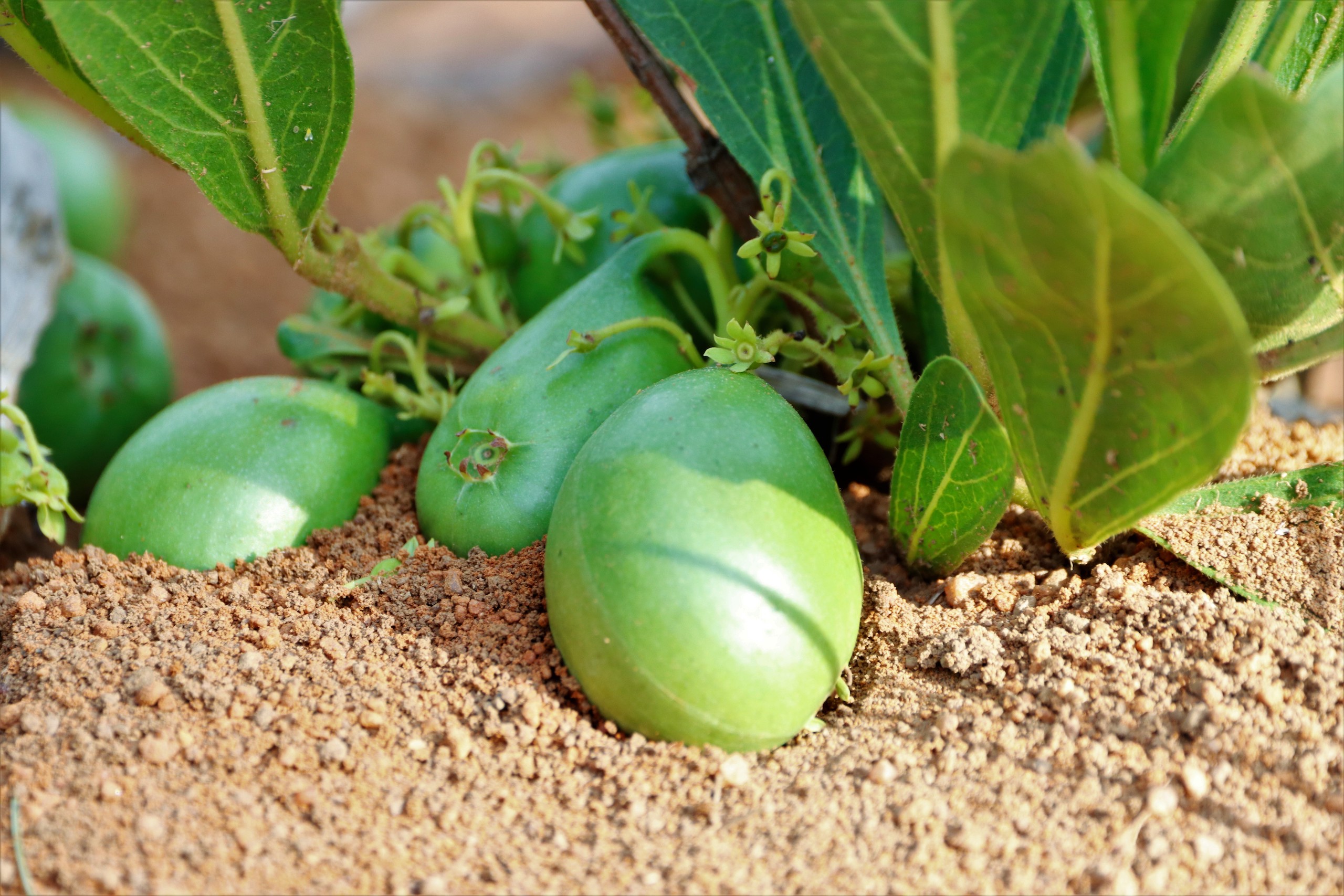
We are moving. We move around the fringes of Fig Tree plains, watching the plains for general game and predators. Animals are a good alarm system should any potential predator be around, so take in your surroundings while foraging and use them to aid you in avoiding being eaten. The sandy soils that are fairly nutrient poor in this area is good habitat for the Sand Apple, Pygmaeothamnus zeyheri. This is the time of year they are fruiting so we seek some out for breakfast. It’s still early in the day. This low growing subshrub is quite spread out, with large, bright green leaves. It is rather unmistakeable. The fleshy fruit is sweet and tasty and enjoyed by many. Enjoy a few, take a few but do not over exploit. Remember where you find them and let’s keep moving. Note to self – remember where you find everything.
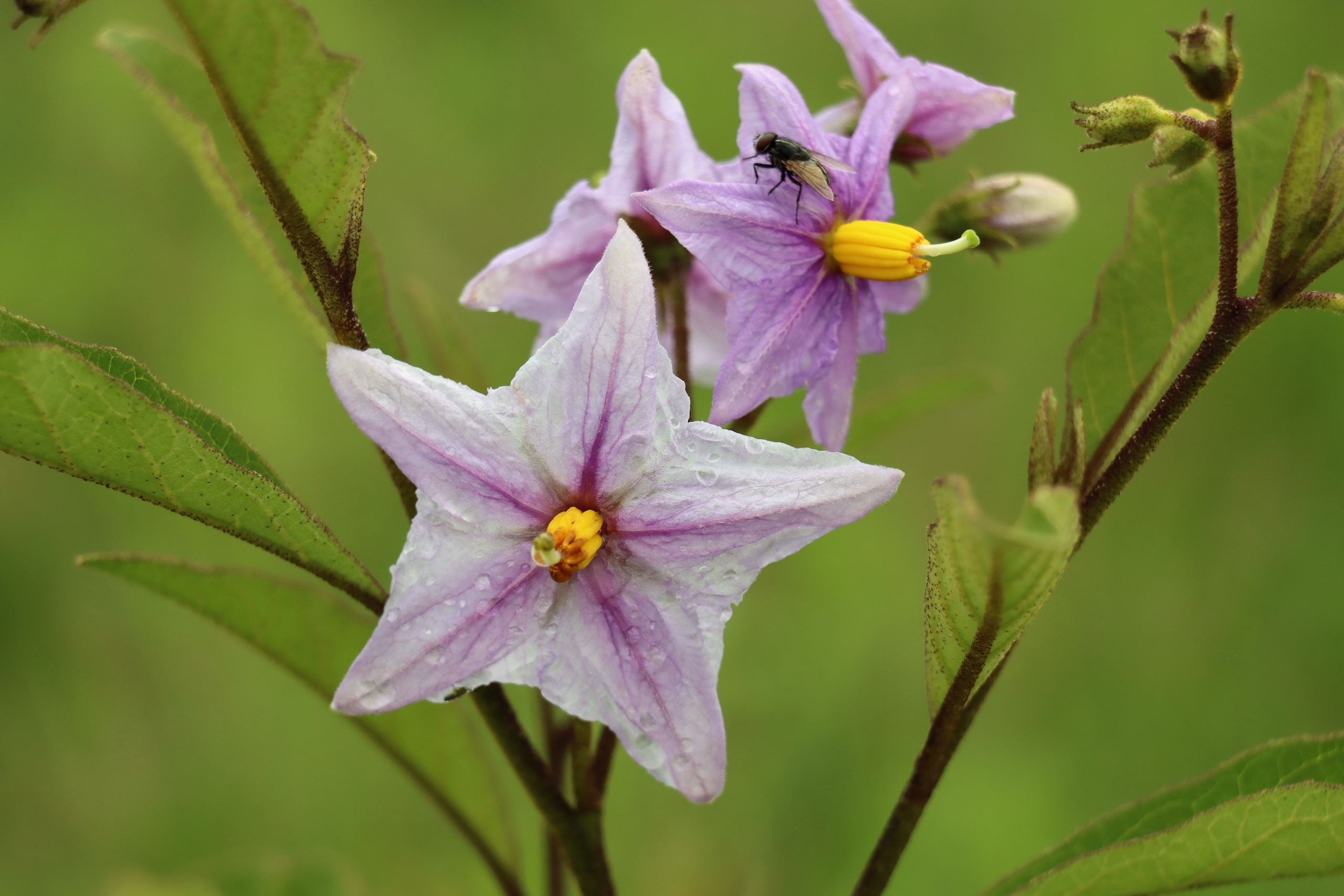
Sitting in the shade of a Sickle bush, on the edge of the plains, somewhat hidden from view, our eye is caught by a bright purple flower on a low growing plant about twenty meters in. Sand apples finished; we move into the plain towards this beautiful enticing plant. Approaching it, we are drawn by the large purple flower with a golden centre, and the small tomato or cherry like fruit, yellow globes hanging just below the flower. STOP! This is the Poison Apple, a member of the Solanaceae family, the night shade family. Commercially we know this family well, as we consume tomatoes and potatoes who belong to it, quite readily. The fruit of this plant is poisonous, and should be avoided. Lesson learnt, let’s move on.
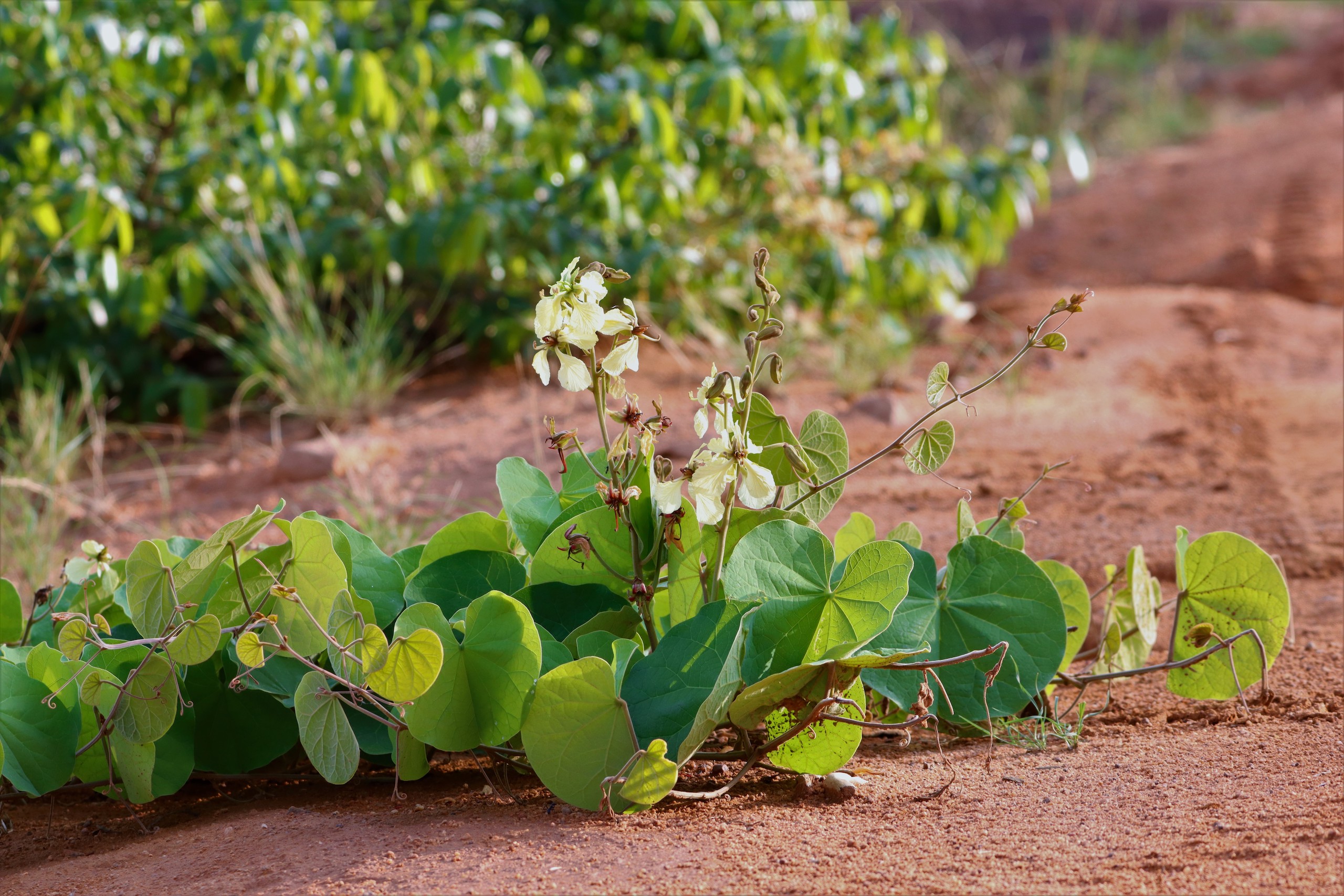
Whilst mesmerised by the Poison apple flower, we are alerted to a commotion by Impala snorting and Baboon barking. A predator could be nearby so we move for cover, using the silver cluster leaf trees lining the periphery of the plains we head for slightly higher ground. On a sandy, rocky plateau giving us a vantage point of the plains below. The excitement subsides and as we watch and wait, we begin to ease and focus returns to us finding food, and heading towards to camp. Close to where we sat, alert, scanning, a long ground-growing vine with large leaves and yellow to white flowers is spotted. It looks familiar yet, somewhat different. This is the Camels Foot, Tylosema fassoglense. It too belongs to the Fabaceae family, a largely trusted family of edible plants worldwide, the same family as the Coffee-neat’s foot. The long thin vines growing along the edges of the plateau we are on, hide a large edible vegetable tuber. Carefully digging around the base of the plant, we remove the large white tuber or root. This can be crushed into a fine meal and eaten like a porridge. If the plant has pods, remove the seeds to be roasted later as a snack and a great source of energy. The seeds contain 40% protein and 30% fat. The cut stems release a sap, which is a good source of moisture. A good ‘on the go’ thirst quencher whilst we move towards more permanent water.
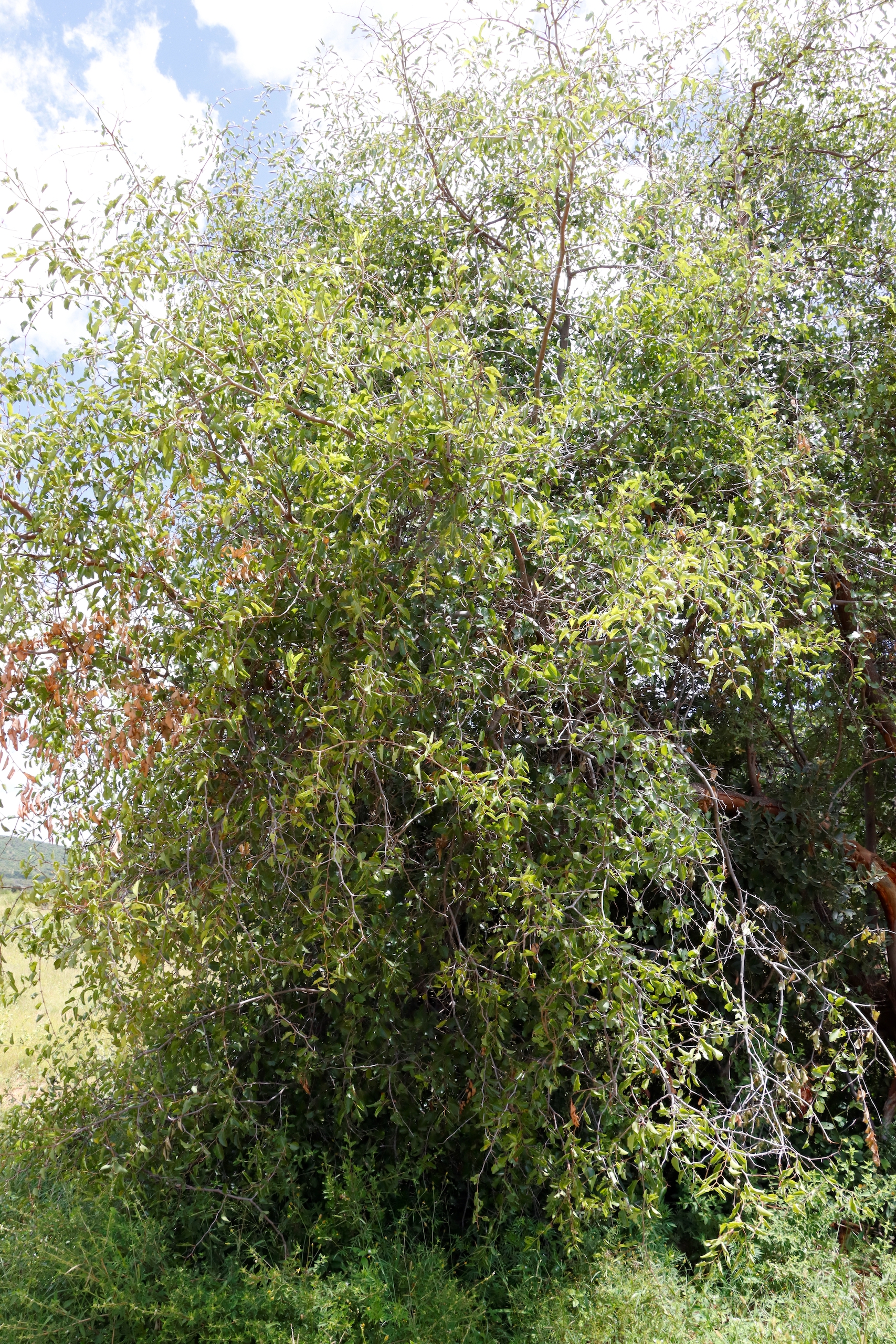
The coast appears clear and the earlier excitement seems to have abated back to some normalcy. It’s mid- morning, the sun is rising and the day is warming progressively. We move towards the Taaibos river, to source other forms of nourishment, water and shade. During the heat of the day the cool river, lined with large Seringas, Cluster-leaf Trees and Water-berry Trees will offer much respite to a number of animals, including buffalo, elephant and predators. Best to be done in this area, before the crowd moves in. Close to the riparian area, we find a Buffalo Thorn, Ziziphus mucronata. It’s not flowering, or bearing fruit, but the new growth on the tree is abundant. The soft new leaves on the end of the branchlets are a great source of nourishment. They can be eaten raw, or boiled like a spinach and added to our Camel Foot tuber porridge. If we had found some fruit or the nuts, these too can be consumed or ground into a meal and eaten as a very nutritious porridge.
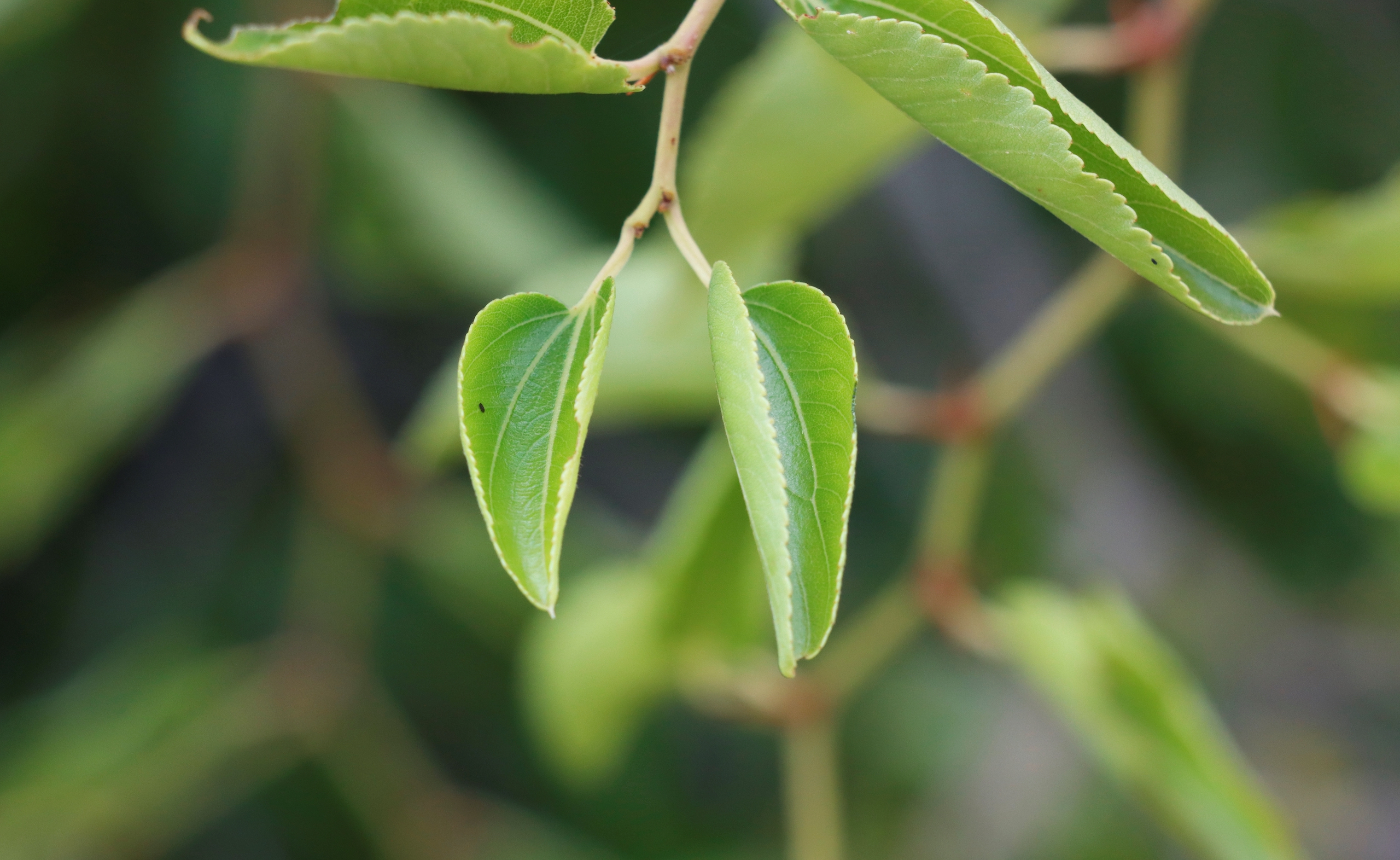
We harvest some new leaves and slowly move along the river line listening for the splash of an elephant bull bathing or the cracking of branches whilst a group of them feed in the shade. We avoid the dense thickets and from time to time move up onto a rocky ledge to give us a slight vantage point to look into the river line below and further on.
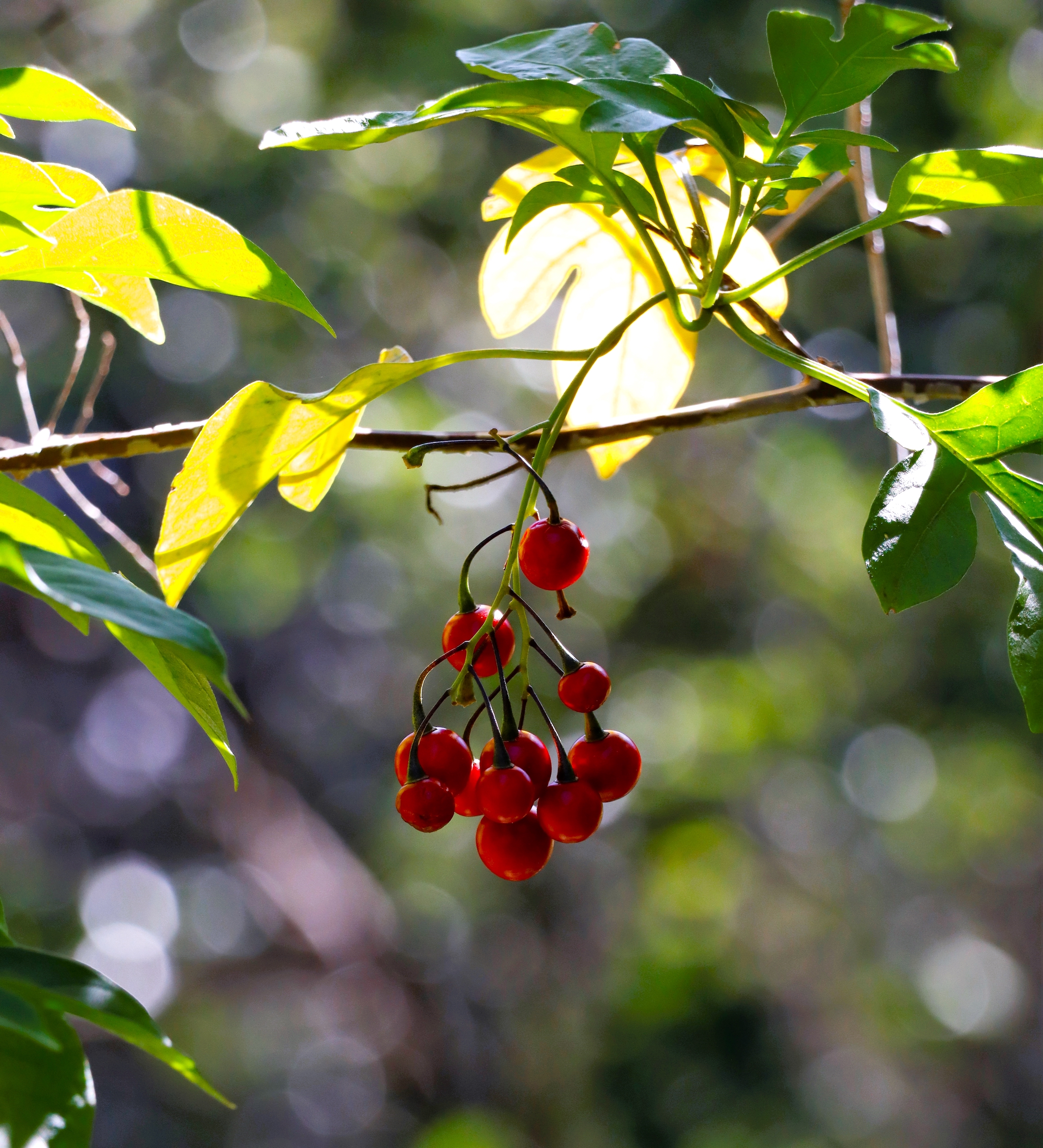
In the coolness of the shade, hugging the dense vegetation areas of the riparian edges, we find these little bunches of red cherries hanging on vines. We sit and watch a number of birds feeding in a little party, clearly enjoying the fruits and the seeds they harbour. The little Cape White-eyes seem particularly fond of them. Perhaps we should see what they are all about? Linked to the vine are a familiar flower sight. A purple hood almost, small, with a little golden face shining underneath. They resemble the purple flowered plant we saw in the plains, whilst eating our sand apple fruit. This vine and the red fruit belong to the night shade family, Solanaceae. Just as before, the fruit of this plant, the Potato Vine (Solanum seaforthianum) are poisonous and are to be avoided, so we do.
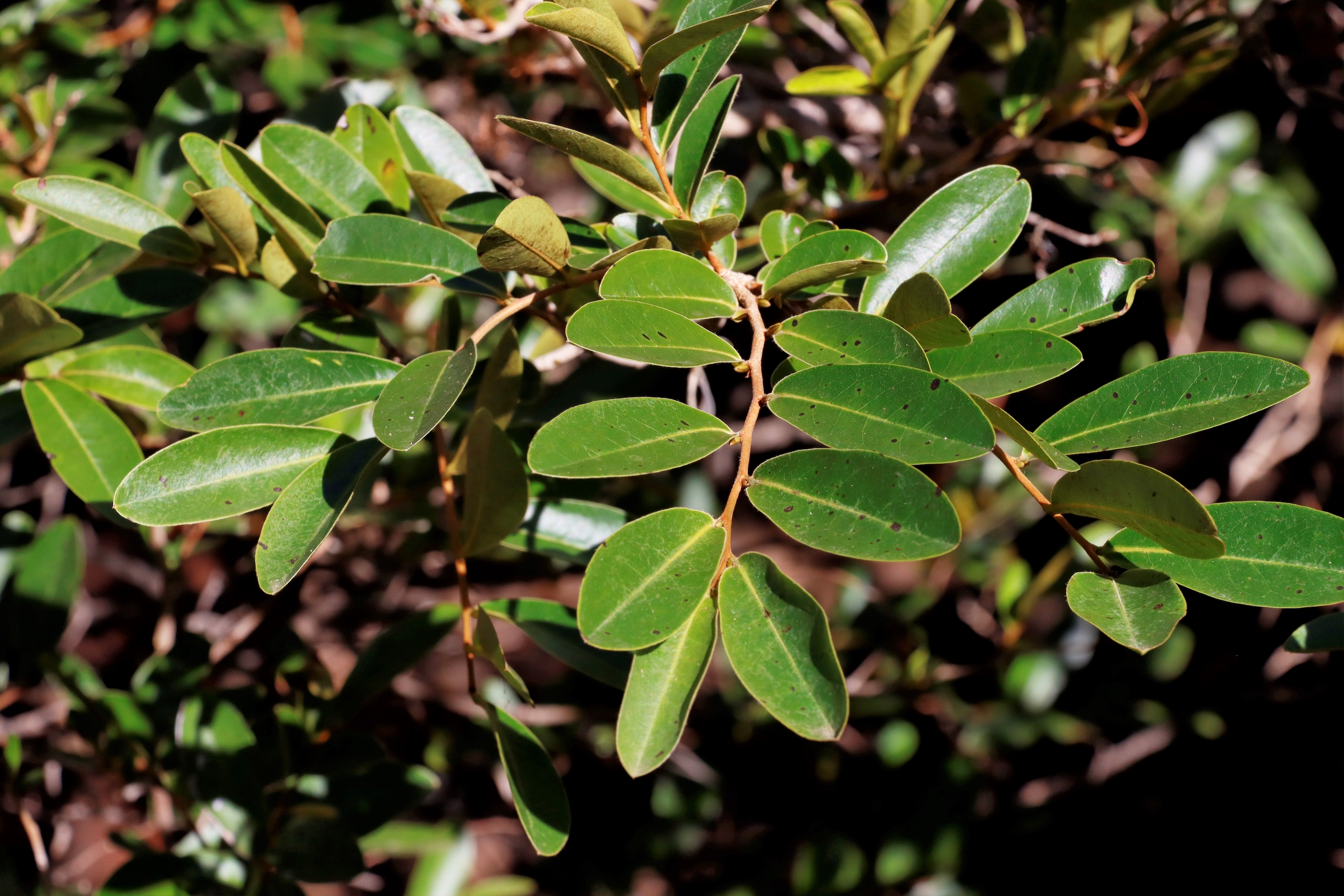
Underneath the potato vine, acting as a support base for the creeper to succeed, is a sprawling dark-green plant. This semi-deciduous tree is a Shakama Plum, Hexalobus monopetalous. It is sadly not fruiting; this would have been ideal. The juicy fruit has a fleshy white pulp that is delicious. Its midday now and the heat starts to make us somewhat delirious. Dreaming of all kinds of sweet foods and cold soft drinks. Of the delicious jam Shakama plum fruit makes, spread onto hot buttered toast with a cup of tea. A fried egg with bacon, spiced with the roasted, crushed seeds enveloped in the fruits flesh. We need to find water, and we do.
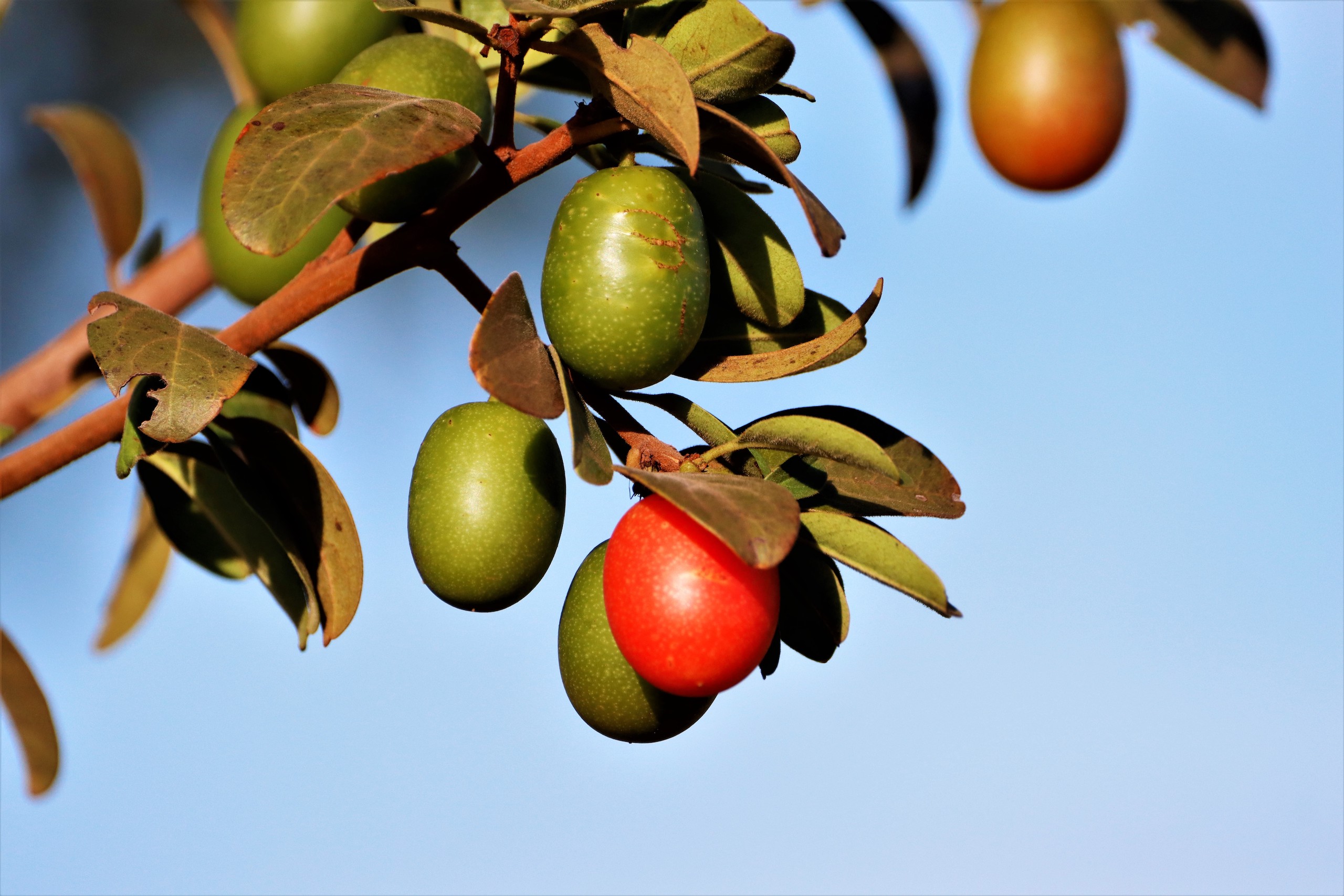
We leave the main river valley and head south and east up a narrow gorge, listening and moving slowly to avoid detection, alerting all senses to whatever else may be using the gorge to shelter from the heat of the day. We stop for a while to rest, to regain energy and direction, and to enjoy the cool, deep-water pools around us.
Along the way we have found fruit from the Bushveld Sourplum, Ximenia caffra. A sour, delicious fruit with good energy reserves and full of vitamin C.
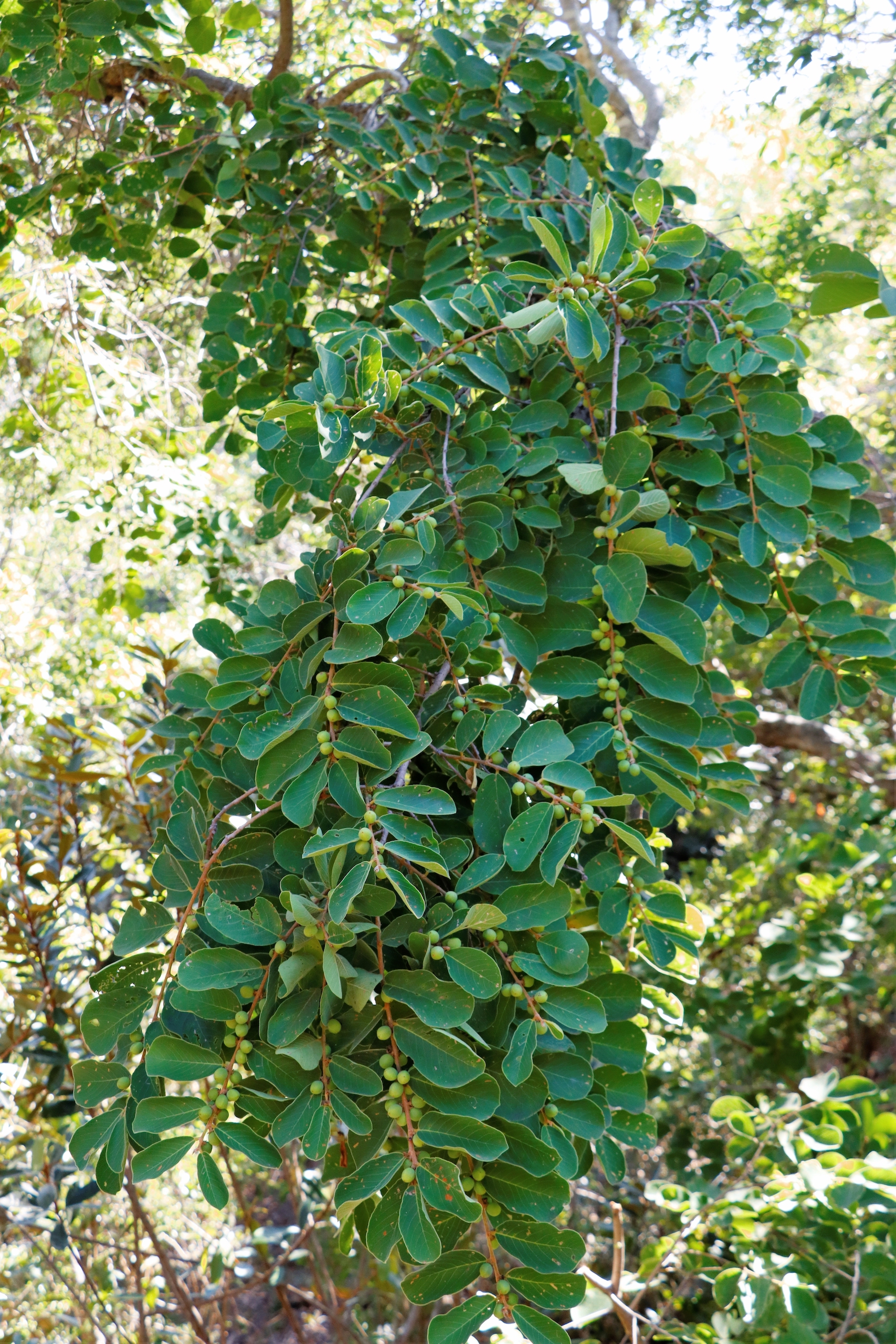
The Velvet-sweet Berry, Bridelia mollis, are full of fruit, highly sought after by many birds and animals, and enjoyed by us. These small pea sized fruits taste of prunes. The soft velvety round leaves are easily identified and at this time of year, the trees are swollen and drooping with the tasty fruit.
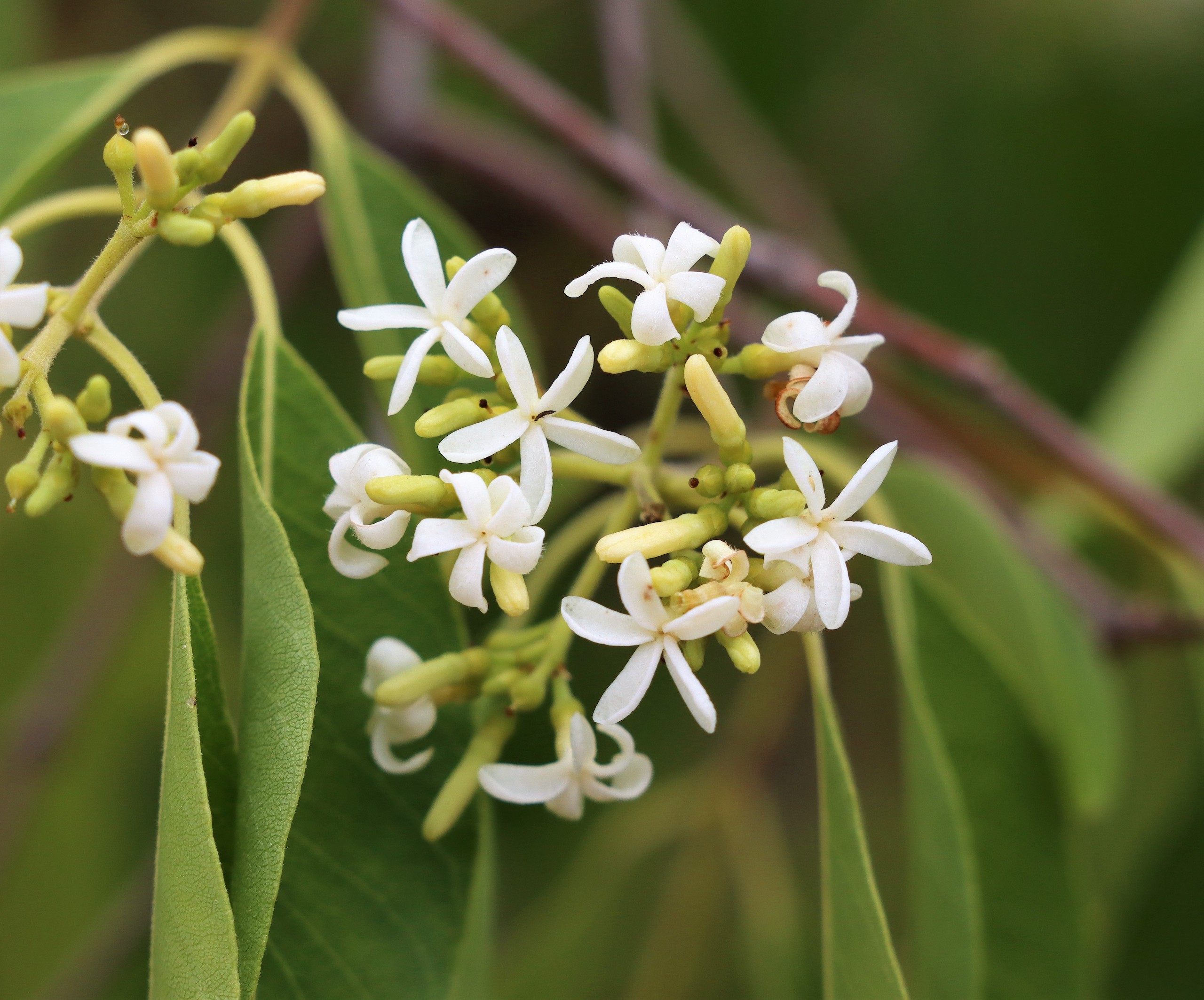
Making our way between the clear pools of water up the gorge, we fight our way through the thicker parts of vegetation all lapping up the abundant water available this time of year. The sticky sap from broken branches from a Horn-pod Tree, force us stop and wash our arms, face and hands before continuing. The Horn-pod Tree, Diplorhynchus condylocarpon, is a favoured tree amongst butterfly and moth larvae as a food source. They in turn, being highly sought after as a source of nourishment for people. A great snack, and worthy of stopping to pick off and enjoy. Moths belonging to the group Sphingidae, better known as hawkmoths or spynx moths, are abundant this time of year. One particular species is striking green, and shaped like a small fighter jet making it unmistakable.
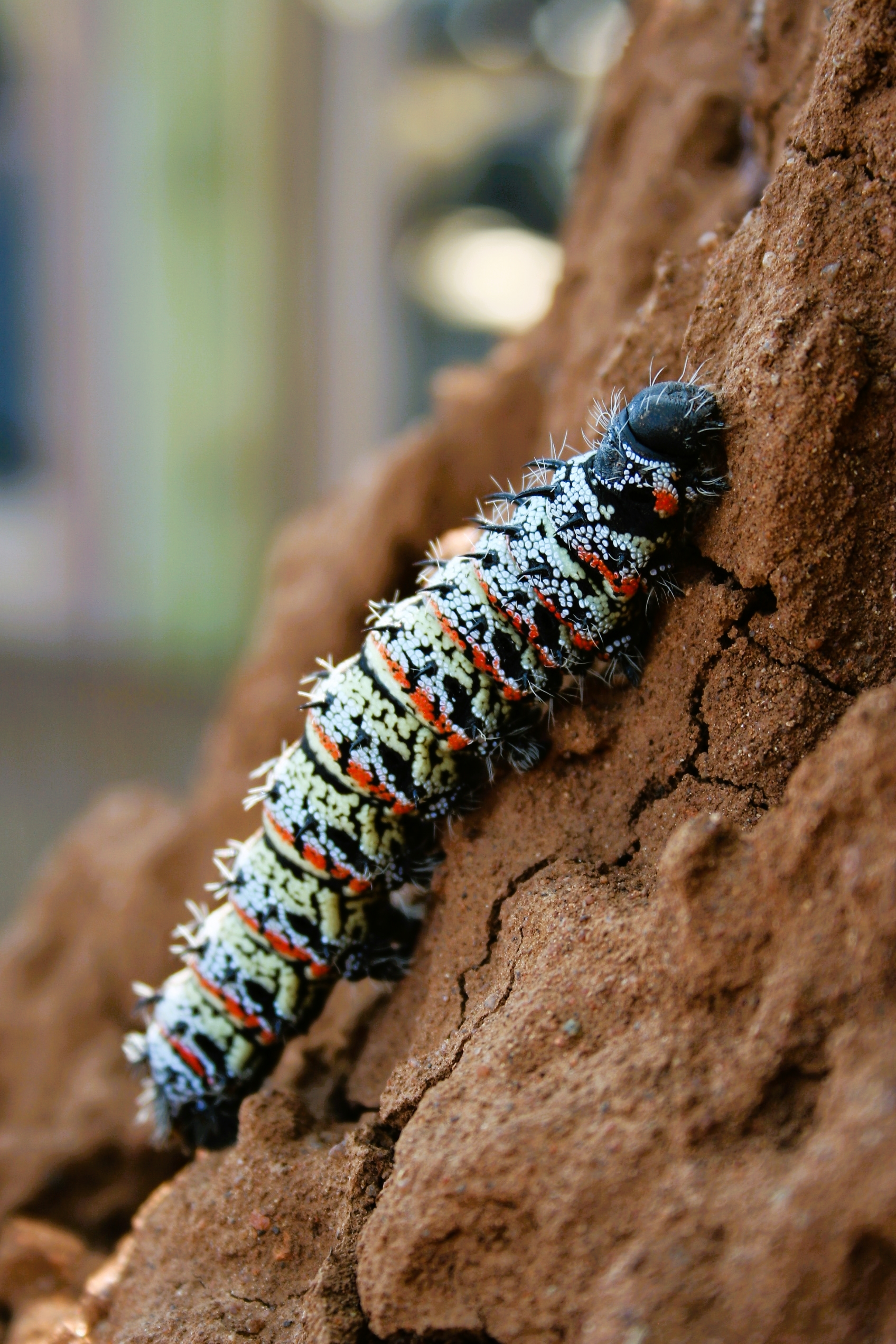
Eating bugs and larvae may not be everyone’s cup of tea, however, eating for survival will counter any concerns you may have over this. The Mopane Worm, the larva of the large emperor moth, Gonimbrasia belina, is highly sought after as a source of protein. I recall working on a Reserve north of Welgevonden Game Reserve, where one morning in December we came across a large termitarium covered with the large multicoloured worms, that are the Mopane Worm. I stopped to photograph them, and were quickly asked by our staff members if they could collect them for later. I asked how they prepared them, having only eaten them dried, like nuts as a snack.
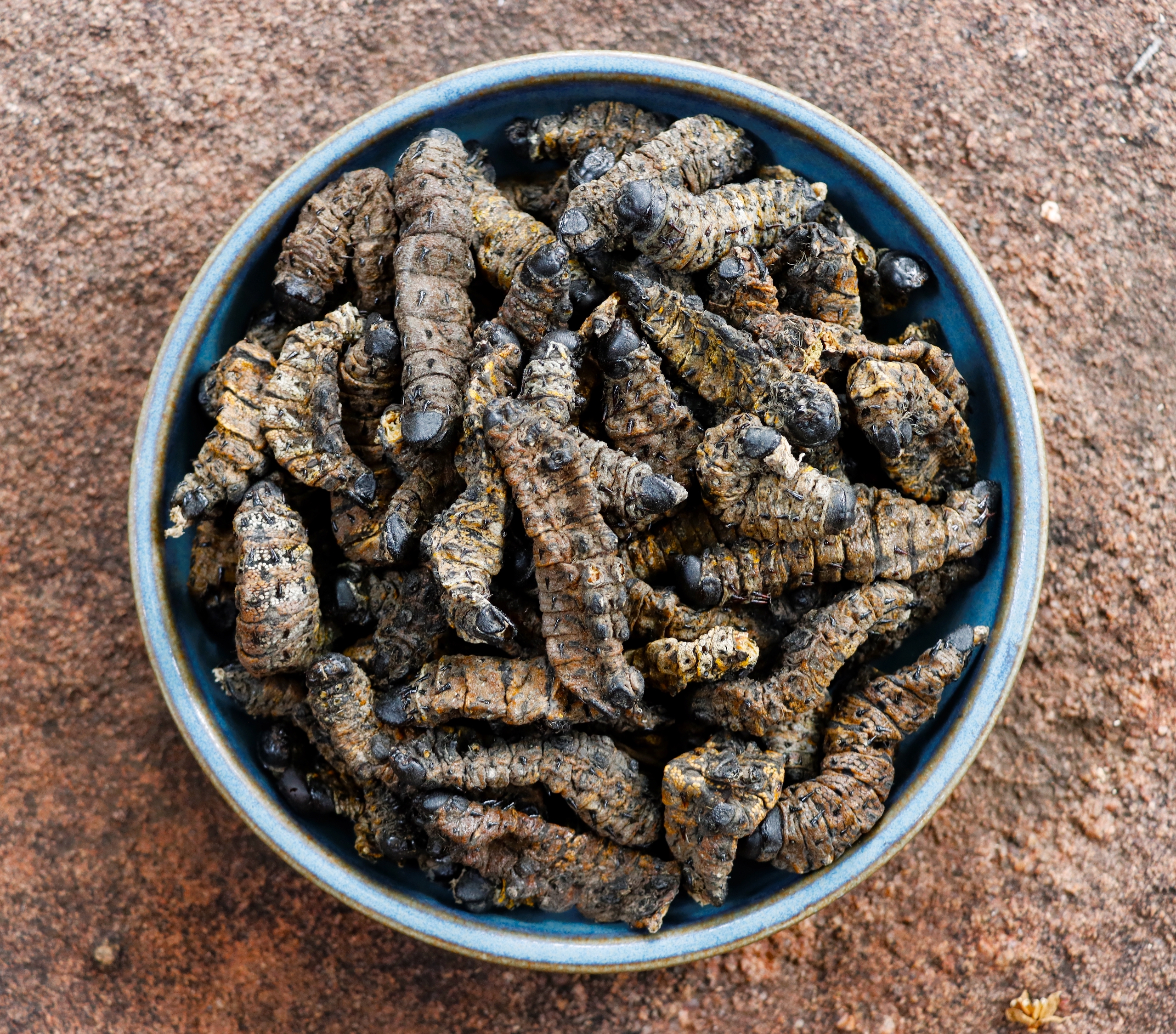
They prepared them with tomato and onion and a little salt, they told me. Eaten with a staple such as maize meal or rice, that morning they were the cause of much animation. I took my photographs and waited for the harvest to end. These larvae often develop underground, and will emerge en masse after a suitable rain event, which the night before had provided. Mopane Worms do not feed exclusively on the Mopane tree, from which they get their name, but also feed quite prolifically on cluster-leaf trees, the Silver Cluster-leaf occurring on Welgevonden Game Reserve.
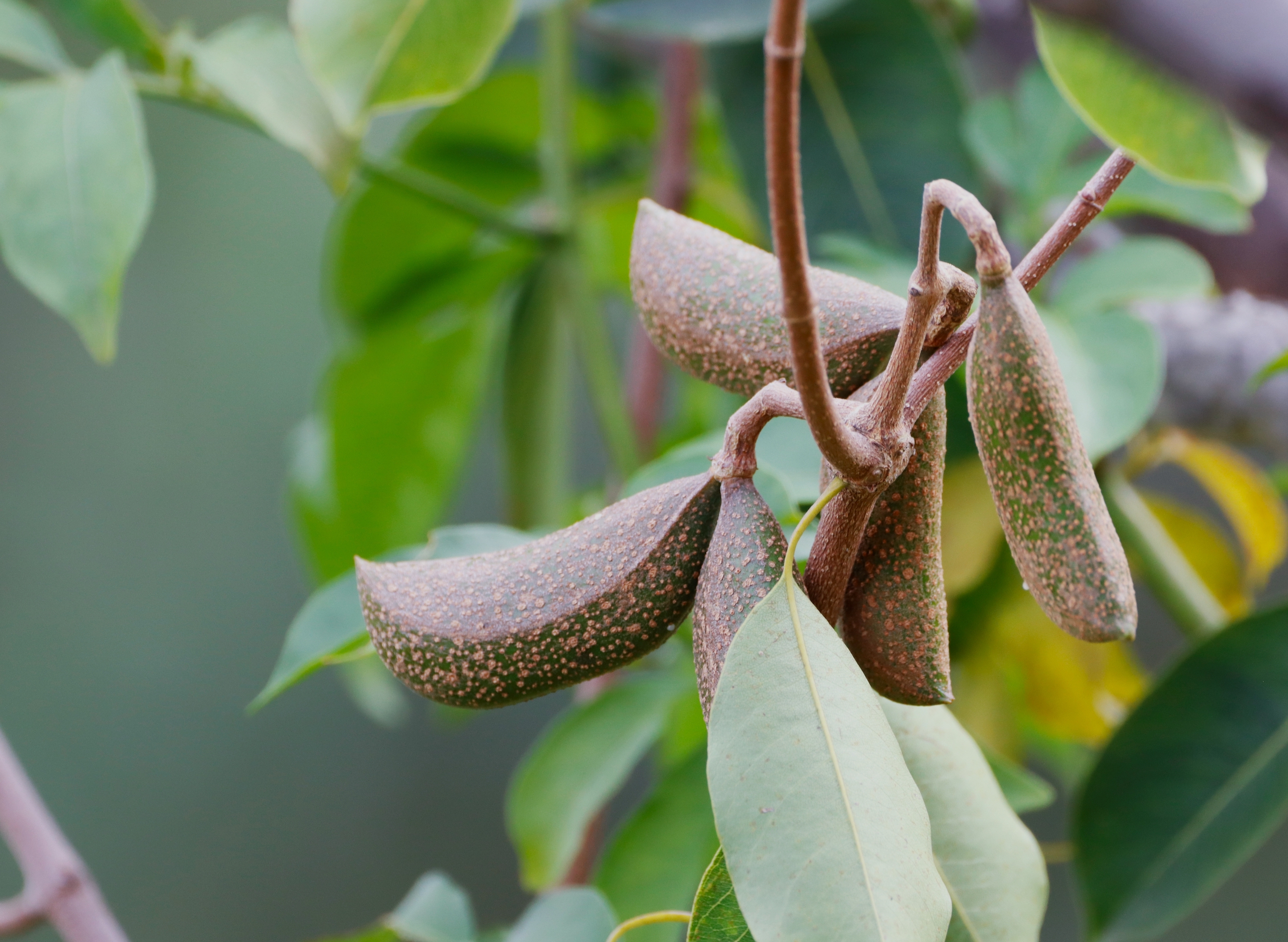
Back to our adventure. The pods that grow on the Horn-pod Tree, giving rise to its name, are a vital source of adhesive which is useful for making a variety of tools. Should we end up being stuck out here for longer than we anticipate, the sticky white latex adhesive would be ideal for sticking arrow heads onto an arrow shaft. Arrow heads could be shaped out of small rocks, with the arrow shafts being derived from the branches of the velvet-sweet berry. Hopefully we can recall where we saw them lower down the gorge, where we sat and enjoyed their tiny sweet fruits. The bow could be made from the flexible, long stems of a raisin bush. We would find them in areas like this, in fact I recall seeing one along the river. A nice steak of sort, cooked on an open fire would never go amiss. However, we digress and must continue back towards the camp before nightfall.
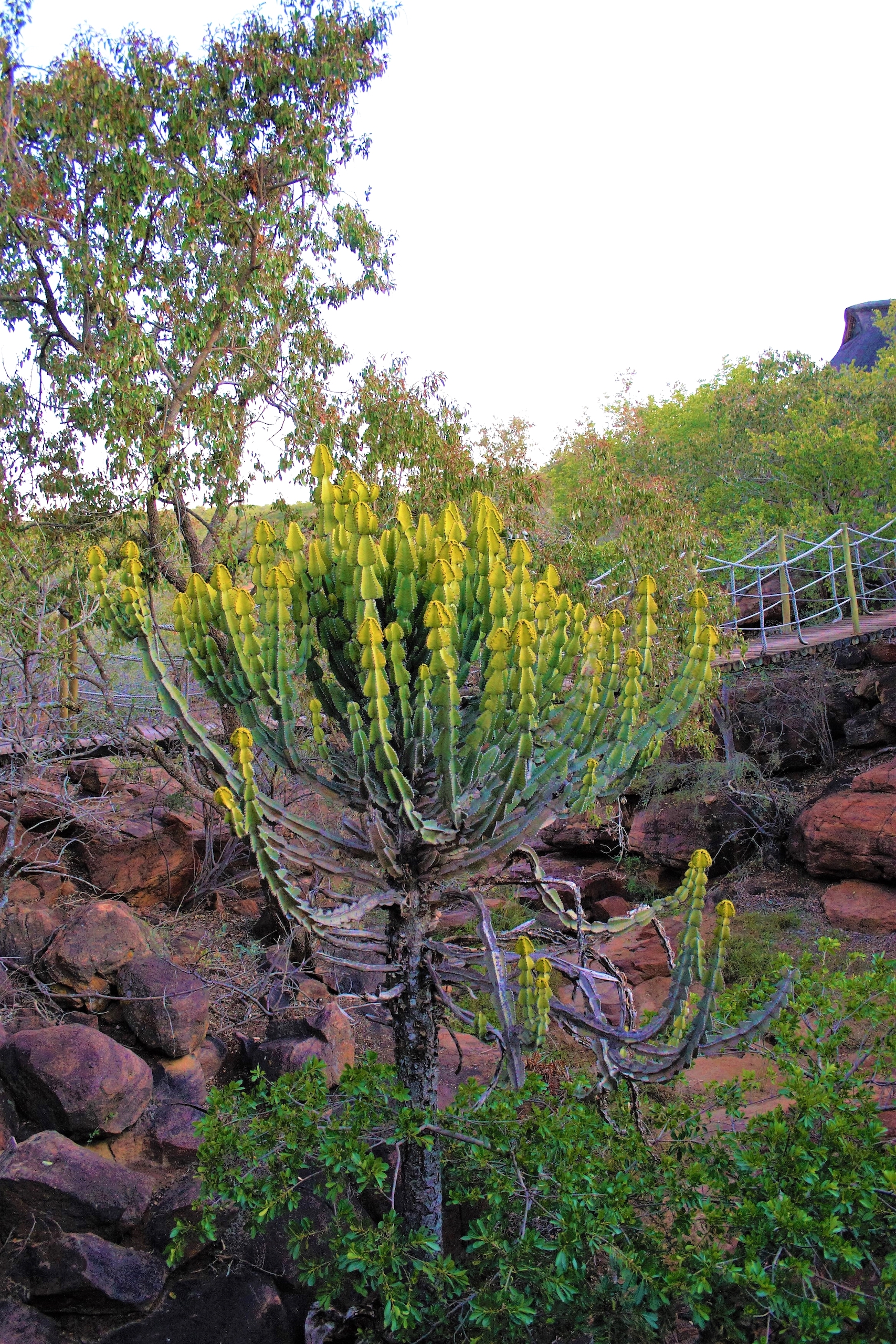
Sitting next to the large water pools that have filled with the fresh water that filters through the rock layers from higher up the gorge, little air bubbles and surface movements catch our attention. This means fish, but how do you get them. Luckily, sitting a little higher on the cliffs that flank the gorge, are familiar trees, that one tells us we are nearing camp and secondly the end of our expedition, but more importantly indicate a means to catching the fish that taunt us in the pools. The Bushveld Candelabra Tree, Euphorbia cooperii, provides an effective fishing tool.
The latex of this plant is incredibly caustic and irritates the skin when it comes into contact with it. Inhaling the fumes of the latex, also causes trouble in breathing, and if rubbed in the eyes may cause blindness. When using this plant to secure some fish for a meal, take care and make sure you really crave fish. The latex is used to poison fish: the poison is prepared by soaking a bundle of grass in the latex, tying it to a stone and throwing it into the water. Paralysed fish rise to the surface within a short period of time. Remember to cook them well, over the coals to remove any potential parasites the fish may contain, including worms. We must be getting hungry, and as the sun begins to dip, shrouding the gorge in a dull blue that indicates dusk in the bushveld, we start to move up the ridge to see the sun and find our bearings. We move up the eastern ridge and draw level with a familiar sight. A thatched structure, another, and then another. Some four hundred meters ahead is Makweti Safari Lodge, we have survived the last twelve hours in finding a wild menu to survive, and enjoy.
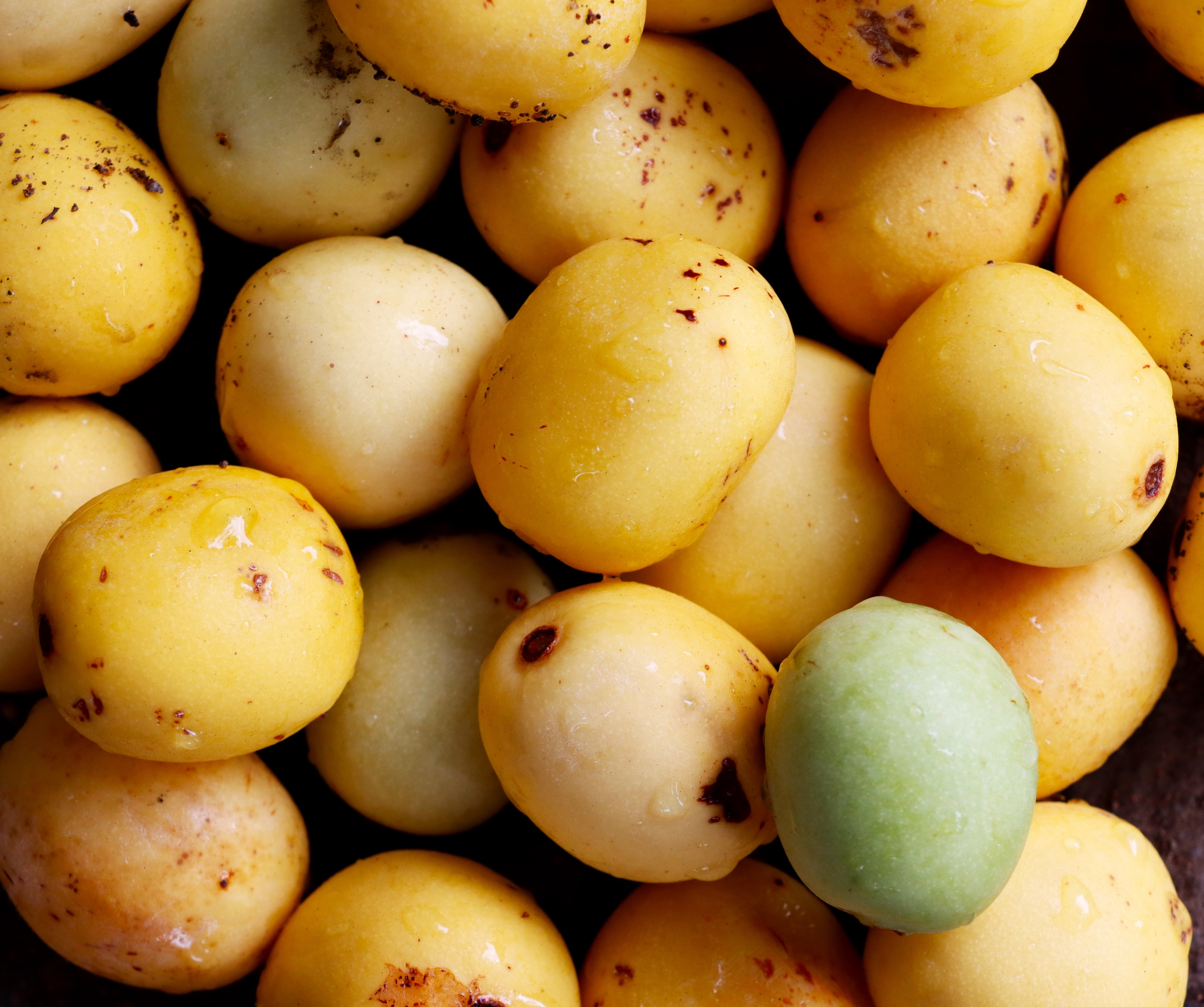
We stumble into the reception, relieved at familiar faces, warmed by the enticing hot shower luring us in and of course, a celebratory drink, the toast – survival. What better way to celebrate than with a glass of Amarula cream on ice, commercially made from the locally sourced wild fruit of a Marula Tree. A seemingly fitting end to a day of wild foraging. We empty our pockets as we enter the bar, like a five-year-old who has been in the garden for hours collecting all kinds of things. Wait, before you pour that momentous beverage, I have a better idea. Earlier that morning, while waiting for the water to boil, and the coffee-neat’s foot seeds to roast, to be crushed into a coffee like brew on our little fire, we wondered the area and collected some seeds from a Wild Basil, Ocimum Americanum. Let’s celebrate our day with our very own homemade, wild cocktail, foraged by ourselves. We steep the seeds in water, causing them to swell into a gelatinous mass. Mixed with a chilled glass of coconut milk, a little sugar and ice blocks, this certainly goes down a treat as we match the sun dipping from the sky with every sip.
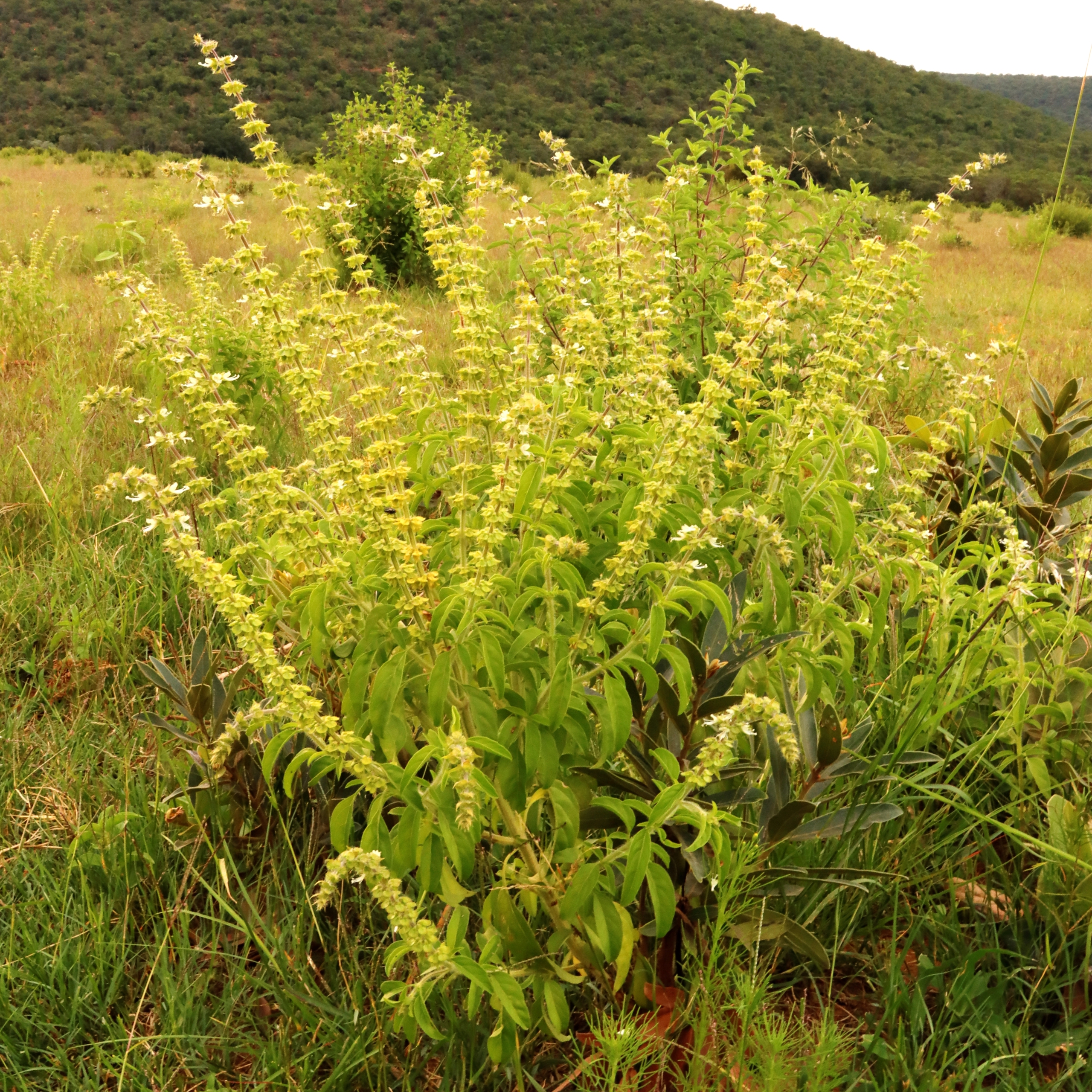
| Family Name | Botanical Name | Common name | Edible? | Other uses |
| ANACARDIACEAE | Sclerocarya birrea | Marula Tree, Cider Tree | Yes – Fruit, seeds | Medicinal |
| ANNONACEAE | Hexalobus monopetalus | Shakama Plum | Yes – Fruit | Medicinal |
| APOCYNACEAE | Diplorhynchus condylocarpon | Horn-pod Tree | NO – Edible larvae found on tree | Adhesive, Medicinal |
| CHRYSOBALANACEAE | Parinari capensis | Dwarf Mobola Plum | Yes – Fruit, seeds | |
| COMBRETACEAE | Combretum zeyheri | Large-fruited Bushwillow | Yes – Vegetable, resin | |
| EUPHORBIACEAE | Euphorbia cooperii | Bushveld Candelabra | NO | Fish poison |
| FABACEAE | Mundulea sericea | Cork bush | NO | Fish poison |
| Burkea africana | Red Seringa Tree | Yes – Resin, vegetable | Medicinal | |
| Bauhinia petersiana | Coffee-neat’s Foot | Yes – Root, seeds | Medicinal | |
| Tylosema fassoglense | Camels Foot | Yes – Vegetable, fruit shells, sap | Medicinal | |
| LAMIACEAE | Ocimum amerincanum | Wild Basil | Yes – Vegetable, seeds, beverage | |
| MALVACEAE | Grewia flavescens | Common Raisin | Yes – Fruit | |
| OLACACEA | Ximenia caffra | Bushveld Sour plum | Yes – Fruit | |
| PHYLLANTHACEAE | Bridelia mollis | Velvet sweet berry | Yes – Fruit | Medicinal |
| RHAMNACEAE | Ziziphus mucronata | Buffalo Thorn | Yes – Fruit, vegetable | Medicinal |
| RUBIACEAE | Vangueria infausta | Velvet Medlar | Yes – Fruit | Medicinal |
| RUBIACEAE | Pygmaeothamnus zeyheri | Sand Apple | Yes – Fruit | Medicinal |
| SAPOTACEAE | Englerophytum magalismontanum | Milk Plum | Yes – Fruit | Medicinal |
Table 1: An overview of some of the useful plants and their uses, found on Welgevonden Game Reserve. (Adapted from Magwede et al, 2019(6))
There is a myriad of uses of many plants on the Reserve, that have traditionally been used for generations, of which I have highlighted only a few which correspond to the purpose of the Blog. This is in no way a complete list or an attempt to indicate the abundant well-known uses in various forms of these or any of the plants found on the Reserve.
It’s always better to forage with an expert, so don’t try this at home.
Text – Neil Davison
Photographs – Neil Davison
References:
- 30 years of personal observations by the author on various Reserves in South Africa including Welgevonden Game Reserve
- -E. van Wyk, N. Gericke, Peoples Plants, Briza Publications, Pretoria, 2000
- -E. van Wyk, B. van Oudtshoorn, N. Gericke, Medicinal Plants of South Africa, Briza Publications, Pretoria, 1997
- van Wyk, P. van Wyk, B.-E. Van Wyk, Photographic guide to Trees of southern Africa, Briza Publications, Pretoria, 2000
- C. Palgrave, Trees of southern Africa, Struik Publishing, Cape Town, 2002
- Magwede, B.-E. van Wyk, A.E. van Wyk, An inventory of Vhavenda useful plants, South African Journal of Botany, 122, (2019), 57-89
- SANBI website – pza.sanbi.org
- SA History online website – sahistory.org.za
- BBC Food website – bbcgoodfood.com

